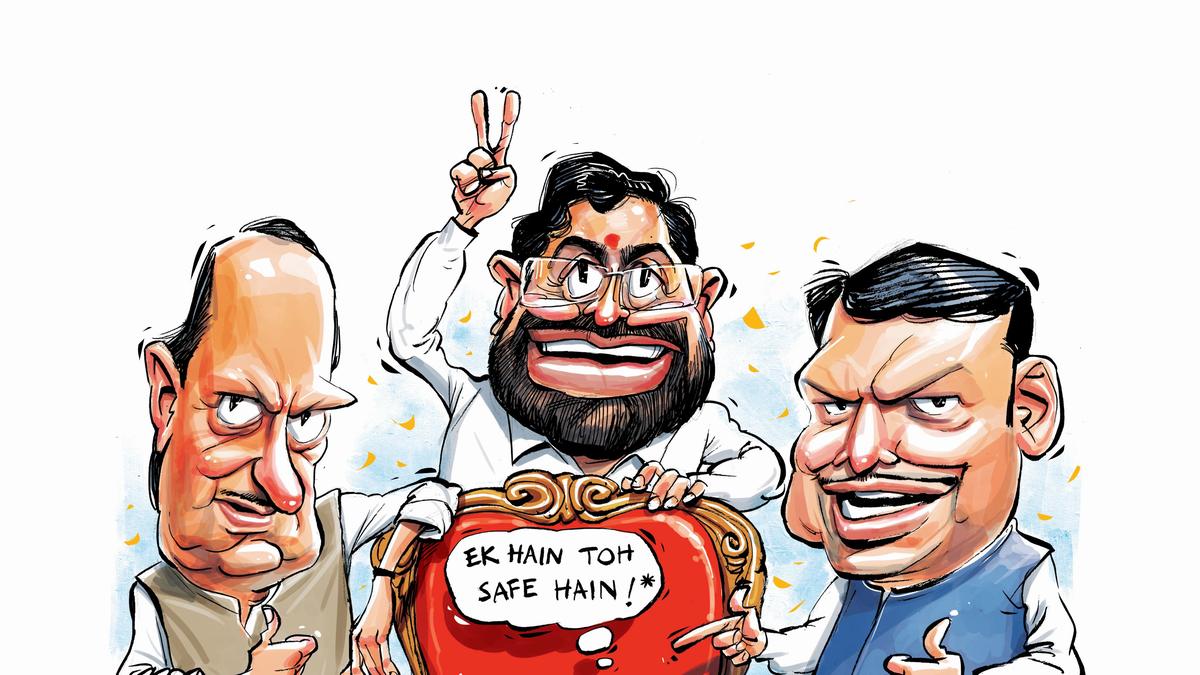 |
|
The Maharashtra Assembly elections witnessed a resounding victory for the BJP-led Mahayuti coalition, securing 233 out of 288 seats. This triumph was fueled by a substantial 14-point lead in vote share, achieving 49.3% compared to the Maha Vikas Aghadi's 35.2%. This represents a significant turnaround from the Lok Sabha elections, where the MVA held a narrow 1.3-point advantage. The MVA's 11-point vote share decline and the Mahayuti's 4-point increase proved decisive in the assembly polls. The Mahayuti's dominance extended across various regions of Maharashtra, exceeding 50% vote share in North Maharashtra, Konkan, and Western Maharashtra. Mumbai-Thane and Vidarbha also showed strong support for the coalition. Notably, Marathwada, the epicenter of Maratha reservation protests, saw the Mahayuti's highest increase in vote share since the Lok Sabha elections, suggesting their strategy of fielding Maratha candidates yielded positive results. Pre-election polls had already predicted a decisive advantage for the Mahayuti among OBC voters.
The performance in rural and semi-urban areas underscores the Mahayuti's ability to mitigate the farmer discontent evident in the Lok Sabha elections. The coalition performed exceptionally well in semi-urban constituencies, securing 51.9% of the vote compared to the MVA's 32.4%. The MVA's substantial 11.1-point drop in urban seats further contributed to the Mahayuti's success, resulting in a significant gain of 32 seats. Interestingly, the class divide did not appear to influence voting patterns; the Mahayuti maintained a strong lead across all types of districts when categorized based on net district domestic product, highlighting broad-based support. The impact of welfare measures like the Ladki Bahin Scheme on the Mahayuti's victory remains speculative, though a significant increase in women voter turnout (65.2% compared to 59.3% in 2019) and anecdotal evidence of women benefiting from the scheme suggest a potential correlation. An increase in men voter turnout of 4.1 points further bolstered overall participation.
The MVA's decline was particularly pronounced in constituencies with a high Muslim population (at least 20% of the electorate with Muslim names in 2014). In these areas, the MVA's support fell by 14.2 points to 37.9%, while the Mahayuti's share increased by 4.4 points to 40%. Analyzing the performance of the constituent parties within the coalitions reveals the BJP's remarkable success rate, winning 132 out of 149 contested seats (89.3%). The Shiv Sena also performed strongly, with a 70.4% success rate (57 out of 81 seats). The NCP, despite initial concerns, defied expectations by winning 41 out of 59 seats (69.5%), outperforming its splinter group, NCP(SP), which secured only 10 seats (11.6%). This shows a significant shift in power dynamics from the Lok Sabha elections. The NCP's ability to retain its leadership and effectively leverage its governance position to expand welfare benefits proved crucial in its victory over the NCP(SP). Similarly, Chief Minister Eknath Shinde’s Shiv Sena successfully outmaneuvered the SS(UBT). The overall election results highlight the Mahayuti's effective campaign strategy, ability to garner broad-based support across various demographics and regions, and successful handling of political divisions within the opposing coalition.
Further research could delve deeper into the specific factors contributing to the Mahayuti's success, including a detailed analysis of campaign strategies, targeted voter outreach, and the effectiveness of welfare programs. Examining the regional variations in voter preferences and identifying the key demographic shifts would provide a more comprehensive understanding of the election outcomes. A comparative analysis with previous election cycles could also reveal long-term trends in voting patterns and political alignments within Maharashtra. Analyzing post-election surveys and exit polls would offer valuable insights into voter motivations and preferences, providing a more nuanced perspective on the factors driving the Mahayuti's landslide victory. By integrating quantitative data with qualitative analysis, researchers can create a more holistic picture of the electoral dynamics that shaped the 2023 Maharashtra Assembly elections.
Source: BJP-led Mahayuti dominant across regions, urban-rural divides
